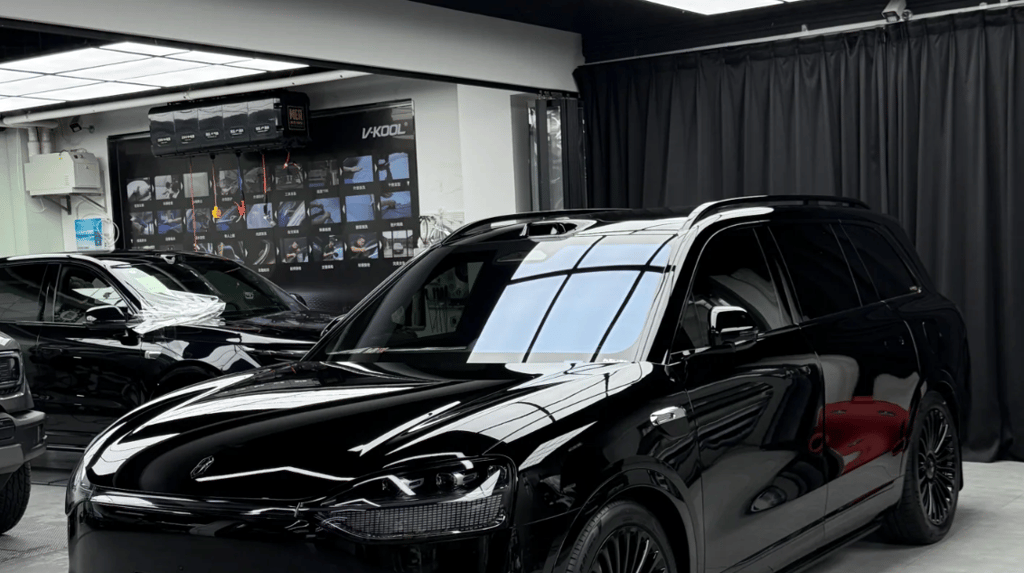The Ultimate Guide to a Bubble-Free PPF Install: 8 Pro Steps Most People Miss
Blog post description.
10/31/20254 min read


Thinking about applying paint protection film (PPF) to your car? The difference between a flawless, invisible finish and a bubbly, peeling mess often comes down to your preparation and technique.
A perfect PPF install doesn't just protect your vehicle's paint—it enhances its appearance and preserves your hard work. Skip the crucial first steps, and you'll be looking at frustrating do-overs. This guide walks you through the professional process for a smooth, long-lasting application.
Step 1: The Deep Clean (Don't Skip This!)
A pristine surface is non-negotiable. Any leftover contaminants will be visible under the film and compromise adhesion.
pH-Neutral Wash: Start with a thorough wash using a pH-neutral car shampoo to lift dirt and grime without leaving residues.
Clay Bar Decontamination: This is critical. Glide a detailing clay bar over the paint to pull out embedded particles like tree sap, tar, and brake dust that washing alone can't remove.
Final Wipe-Down: Use a mixture of isopropyl alcohol and distilled water to wipe down the entire area. This final step eliminates any invisible waxes, oils, or silicones, ensuring the adhesive can bond perfectly. Pay extra attention to edges and crevices where dirt loves to hide.
> > Pro Tip: Rushing the prep work is the #1 cause of installation failures. A perfectly clean surface is your best insurance against bubbles and peeling.
Step 2: Control Your Environment
Where you install the PPF matters immensely. An uncontrolled space is full of hidden risks.
Go Indoors: Always work in a clean, indoor space like a garage or a detailing bay. Installing outside invites dust, bugs, and pollen to ruin your fresh film.
Ideal Conditions: Aim for a steady temperature (60–75°F / 15–24°C) and moderate humidity. Minimal airflow is key to preventing dust from settling on the adhesive.
Lighting is Key: Bright, white LED lights are essential. They help you spot tiny air bubbles, fluid streaks, and trapped debris instantly.
Controlling your environment means you work faster, cleaner, and with far fewer mistakes.
Step 3: Don't Cheap Out on Film & Tools
Your results are only as good as the materials you use.
Choose Premium PPF: High-quality films like our GSWF Defender Series are easier to work with, stretch without distorting, and offer self-healing properties and superior clarity.
Essential Tools:
Squeegee: A professional-grade squeegee with felt or Teflon edges to prevent scratching.
Heat Gun: A reliable, adjustable heat gun for stretching film around curves.
Spray Bottles: Dedicated bottles for a consistent slip solution.
Good tools give you control and precision, making the entire process smoother.
Step 4: Master the Slip Solution & Wet Install
The slip solution is your secret weapon for a stress-free install.
The Mixture: It's typically distilled water with a few drops of baby shampoo or a dedicated slip solution additive. This creates a lubricating layer.
Spray Generously: Apply the solution liberally to both the vehicle's paint and the adhesive side of the PPF. A wet surface allows the film to "float," giving you time to position it perfectly before it sticks.
Weather Adjustment: In hotter weather, use a slightly more concentrated mixture to prevent the solution from evaporating too quickly.
A wet install not only prevents premature adhesion but also reduces squeegee drag and minimizes the risk of scratches.
Step 5: Precision Cutting & Alignment
If you're using bulk film, accuracy is everything.
Cut Oversized: Trim your piece slightly larger than the panel. This gives you a margin for error for perfect alignment and a clean final trim.
Align Before Adhering: Gently lay the film onto the lubricated surface and adjust its position. Only when you're 100% satisfied, begin to press it down.
Sharp Blades Only: Use a fresh, sharp blade for trimming and follow the panel gaps tightly. A clean trim line makes a professional-grade difference.
Step 6: Perfect Your Squeegee Technique
Proper squeegee work is an art that ensures a bubble-free finish.
The Motion: Using your slip solution, position the film and then use overlapping strokes from the center outward to push out all fluid and air.
Steady Pressure: Maintain firm, even pressure and work methodically. Rushing causes bubbles, especially on complex curves and edges.
Fix Mistakes: If a bubble appears, don't panic. Gently lift the film back, re-apply slip solution, and re-squeegee the area.
Step 7: Use Heat Intelligently
Heat makes the film pliable and manageable, especially on challenging body lines.
Softening the Film: Use a heat gun to warm the PPF, making it flexible enough to stretch and conform to curves without excessive tension.
Keep it Moving: Never hold the heat gun in one spot. Keep it in constant motion and maintain a safe distance to avoid overheating or damaging the film. Around 175°F (80°C) is usually ideal.
Set the Edges: Heat also helps activate the adhesive, sealing the edges firmly in place.
The real skill lies in finding that perfect balance: enough heat to form the film, but not so much that you compromise it.
Step 8: Final Inspection & Touch-Ups
Your work isn't done once the last piece is on.
The Touch Test: Run your fingers over every panel, feeling for lifted edges, trapped moisture, or dust particles.
Correct Imperfections: Use your heat gun and squeegee to lay down any stubborn edges and smooth out minor issues.
Conclusion: Perfection is a Process
A flawless PPF installation is a rewarding achievement that delivers superior protection and stunning visual results. By investing time in preparation, using quality materials, and following these professional techniques, you can achieve a showroom-quality finish that lasts for years.
